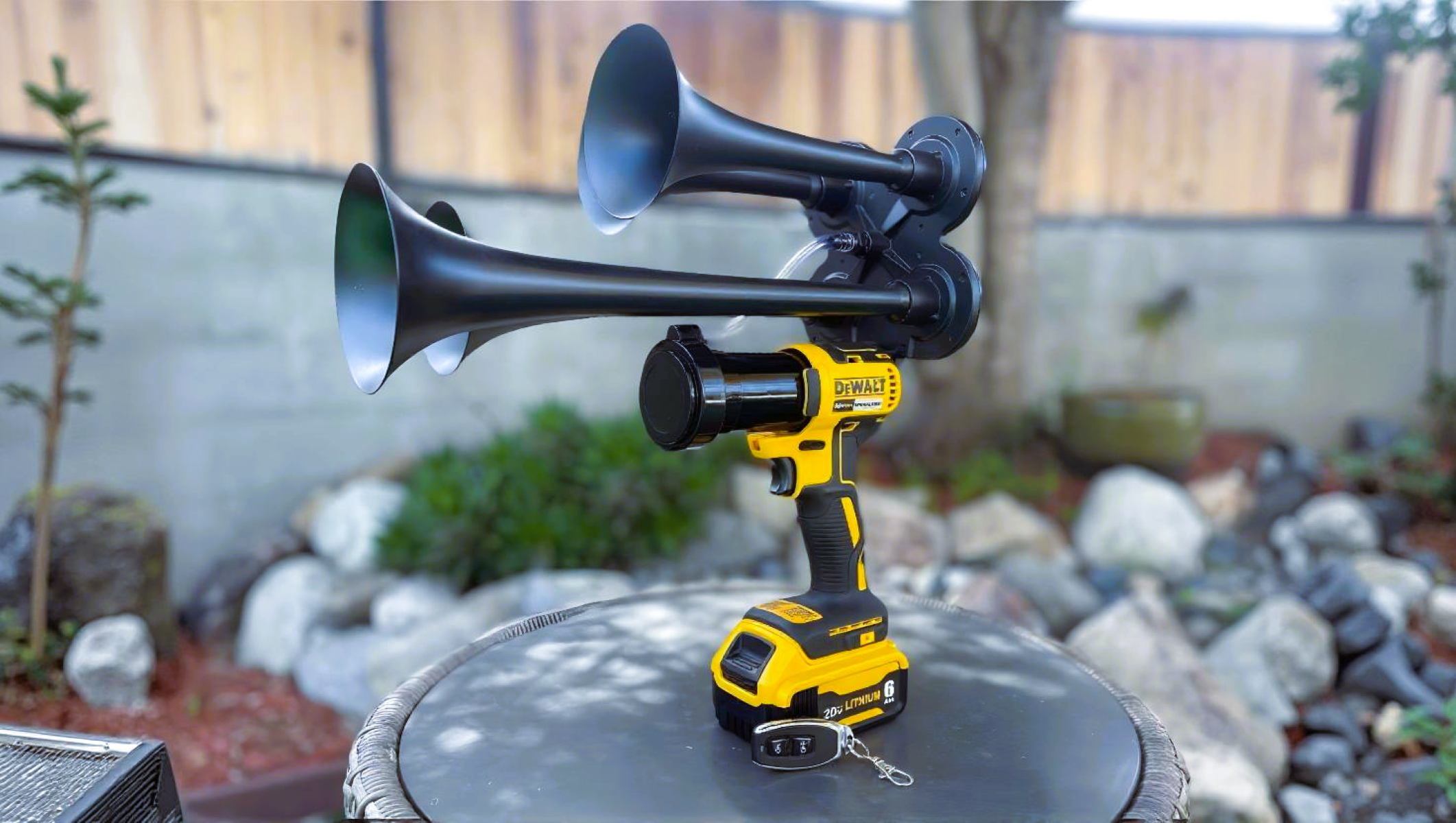In today’s fast-paced world, clear communication is key, and auditory alert systems have become a crucial part of ensuring that we stay informed and aware of important events around us. Whether it’s in healthcare, transportation, workplaces, or home environments, having an effective auditory alert system can make all the difference. In this article, we’ll explore what auditory alert systems are, how to design them, and why they matter. Let’s dive in!
What Are Auditory Alert Systems?
Auditory alert systems are essential tools designed to alert individuals to important information or events through sound. These systems utilize various sound signals such as alarms, tones, and voice messages to communicate critical messages effectively. In an increasingly busy world, auditory signals provide a fast and reliable way to grab attention, especially when other forms of communication, like visual cues, may not be enough. They serve as an immediate warning system, notifying individuals of urgent issues that need their attention.
These systems are commonly found across various industries, ranging from healthcare and emergency services to public transportation and consumer electronics. In healthcare settings, auditory alerts are used to inform medical staff about important changes in patient status, such as a drop in vital signs or an emergency situation. For instance, a heart rate monitor might emit a specific tone to indicate a critical change, allowing healthcare professionals to respond quickly.
Similarly, auditory alert systems are crucial in emergency situations, where immediate action is required. A fire alarm, for example, uses loud and distinct sounds to warn people of potential danger, ensuring they evacuate the area quickly and safely. In transportation, auditory signals such as announcements or train station alerts help keep passengers informed about schedule changes, delays, or upcoming destinations, providing clear guidance in busy or noisy environments.
In addition to these industries, auditory alert systems are also used in consumer electronics like smartphones, smart home devices, and alarm clocks. These alerts help users stay connected and informed, even when they are not looking at a screen. Whether it’s a notification about a new message or a reminder to take medication, these systems use sound to ensure that people don’t miss important events, regardless of what they are doing at the time.
The Importance of Auditory Alerts
In today’s fast-paced world, where multitasking has become a norm, it’s easy to get distracted or miss critical visual cues. Whether we are at work, on the road, or at home, we are constantly juggling multiple tasks, making it difficult to pay attention to everything happening around us. This is where auditory alerts play a vital role. They serve as an essential tool for ensuring that important events are noticed and acted upon quickly. Here’s a detailed list of their importance:
- Increased Awareness: Auditory alerts significantly boost awareness, particularly in high-stress situations or emergencies. When someone is overwhelmed with tasks or distractions, a distinct sound can break through the noise and immediately capture attention, helping people recognize when something requires urgent action.
- Improved Response Time: Quick response is crucial in many environments, especially during emergencies like fire alarms or medical alerts. Auditory alerts help to trigger a faster reaction by cutting through distractions. The sudden nature of a well-designed sound ensures that individuals react swiftly, potentially preventing harm or mitigating damage.
- Accessibility for Those with Visual Impairments: One of the key benefits of auditory alerts is that they provide an inclusive solution for individuals who may not be able to rely on visual cues, such as flashing lights or screen notifications. By offering auditory signals, these systems ensure that everyone, regardless of their ability to see, can access important information.
- Ensuring Immediate Action: Loud, distinct sounds can prompt immediate actions from individuals. Whether it’s an alarm indicating fire, a security breach, or a system malfunction, a clear and attention-grabbing sound signals urgency, prompting individuals to take immediate action without delay.
- Reducing Cognitive Load: Multitasking often leads to cognitive overload. Auditory alerts can help reduce mental strain by acting as a cue, allowing individuals to focus on other tasks while still being aware of critical information. By triggering an alert through sound, individuals can respond promptly without being distracted from their ongoing tasks.
- Time Sensitivity in Critical Situations: In time-sensitive environments, such as hospitals, factories, or airports, auditory alerts help convey urgency and facilitate faster decision-making. A sound signal provides an immediate notification, reducing the chances of missing a critical deadline or an emergency situation.
- Versatility in Various Settings: Auditory alerts are versatile and can be used in a wide range of settings. Whether in healthcare, transportation, workplaces, or home security, the ability to use sound-based alerts ensures that critical messages are communicated across diverse environments.
- Emotional Impact and Urgency: The emotional tone of auditory alerts can also be designed to evoke urgency. A loud, high-pitched sound, for example, is often used in emergency situations to create a sense of immediate danger, prompting individuals to act fast. The psychological impact of such sounds is a powerful tool for reinforcing the importance of the alert.
- Improving Efficiency in Workplaces: In workplaces, especially those with high-risk environments like factories or construction sites, auditory alerts can improve safety and productivity. A well-timed alert can notify workers about machinery issues, safety hazards, or even the need for breaks, helping maintain smooth operations.
Key Components of an Effective Auditory Alert System
| Component | Description | Types of Sounds | Volume & Frequency | Location & Coverage |
| Sound Type | The type of sound used can determine how effective the alert is at grabbing attention. | – Continuous Sounds: Unbroken sounds, e.g., sirens. – Intermittent Sounds: Pulsing alerts. – Voice Alerts: Human speech or pre-recorded messages. |
– Volume must be audible in noisy environments. – Frequency should balance between loudness and clarity. |
– Strategic placement of speakers and alarms for full coverage. – Redundancy in larger or open spaces. |
| Volume & Frequency | The volume must be loud enough to be heard clearly in various environments without causing discomfort. | – Frequency Range: Lower frequencies travel further, while higher frequencies are more effective in close proximity. | – Volume: Loud enough for recognition without causing harm. – Frequency Range: Different frequencies alert in different environments. |
– Ensure optimal coverage across the area to avoid missing the alert. |
| Location & Coverage | Proper placement and coverage are essential to ensure the alert is heard by everyone in the vicinity. | – Place in key locations for maximum reach. – Consider environment-specific needs, like outdoor or indoor alerts. |
– Systems should be powerful enough to reach all corners of a space. – Redundant systems can avoid missed alerts. |
– Strategically placed to ensure full coverage. – Redundancy in larger spaces is essential. |
| Clarity & Distinctiveness | Ensures that the sound is clear, distinct, and easy to recognize to prevent confusion. | – Unique sound for each type of alert, avoiding overlap (e.g., fire alarm vs. doorbell). | – Avoid overly complicated or jarring sounds that could be confusing. – Use different frequencies to distinguish alerts. |
– The sound should be clear, easily recognizable, and free of distortion. |
Designing a Successful Auditory Alert System
Designing an effective auditory alert system is a complex task that requires careful consideration of various factors. It’s not just about choosing a loud sound; it’s about making sure the system functions as needed across different environments and situations. The process begins with understanding the purpose and environment where the system will be deployed. Whether it’s in an office, a hospital, or a factory, the specific needs of each setting will guide the design of the alert system. For instance, an office might require notifications about meetings or system failures, whereas a hospital needs alerts for critical patient changes or emergencies.
Once the environment is understood, the next step is to select the appropriate alert sounds. The sound should be tailored to the environment and the urgency of the message. In a noisy factory, a continuous, loud siren might be necessary to grab attention during an emergency, while in a healthcare setting, voice alerts can provide clear, actionable instructions for staff. The right balance of sound type ensures that the message is communicated effectively and without confusion.
The volume and placement of the alert system are just as important. The size of the area and the ambient noise levels must be taken into account to ensure the sound can be heard by everyone who needs to hear it. In a loud industrial setting, the system may need to be significantly louder and might require additional layers of redundancy, such as incorporating visual cues like flashing lights or vibrations. Placing the alert devices in strategic locations ensures that no matter where a person is, they’ll receive the alert in time.
Testing and continual evaluation are crucial steps in the process. Once the system is installed, it must be tested to ensure it works as intended. Simulating real-life scenarios will help determine whether the alerts are audible and attention-grabbing from different areas. After testing, it’s essential to evaluate the system regularly and gather feedback from users. Over time, the system might need adjustments, such as changes in sound types, volume, or the introduction of new features to improve its effectiveness. By continuously refining the system, you ensure it stays relevant and efficient in meeting its goals.
Challenges in Building Auditory Alert Systems
Building an effective auditory alert system is not without its challenges. While the goal is to create a system that communicates information quickly and efficiently, there are several obstacles that designers must overcome to ensure it works well in real-world scenarios. Below are some of the common challenges faced when building these systems:
- Noise Pollution: Balancing the volume of the alert with overall environmental noise is one of the primary issues. If the sound is too loud, it can cause discomfort or contribute to noise pollution in the area. On the other hand, if the sound is too quiet, it may not be heard in noisy environments, rendering it ineffective.
- False Alerts: False or irrelevant alerts can lead to desensitization, where people start ignoring the sound altogether. If individuals become accustomed to hearing frequent, unnecessary alarms, they might not react quickly to more serious or critical alerts, which can be dangerous.
- Technical Failures: Any malfunction in the system, such as faulty speakers, power outages, or software glitches, can compromise the alert system’s effectiveness. These failures can lead to missed alerts or delays, which could have serious consequences in emergency situations.
- Accessibility: Ensuring the alert system is accessible to everyone, including individuals with hearing impairments, is crucial. To make the system more inclusive, it’s important to incorporate additional forms of feedback, such as visual signals or tactile cues, to support people who might not be able to hear the alerts clearly.
Auditory Alert Systems in Different Industries
| Industry | Description | Use of Auditory Alerts | Importance | Challenges |
| Healthcare | Auditory alerts in healthcare settings are crucial for keeping staff informed about patient status changes. | Alerts notify staff of critical changes, emergencies, or equipment malfunctions. | They ensure immediate response in life-threatening situations. | Risk of alarm fatigue if overused or poorly managed. |
| Transportation | In transportation hubs like airports and train stations, auditory alerts guide passengers and ensure smooth operations. | Alerts include departure announcements, safety warnings, or emergency messages. | They help manage crowd flow and ensure safety during emergencies. | Background noise can interfere with the clarity of announcements. |
| Workplaces | In industrial workplaces, auditory alerts are used to signal dangers or notify employees about break times. | Alerts for hazardous machinery, safety protocols, or scheduled breaks. | They improve worker safety and operational efficiency in high-risk environments. | Potential for workers to ignore repeated alerts if they become accustomed to them. |
| Home Use | In homes, auditory alerts are used in security systems to notify homeowners of potential threats. | Alerts for doorbells, security breaches, fire alarms, or carbon monoxide warnings. | They keep homeowners informed and ensure quick responses to threats. | False alarms or failure of the system can reduce trust in the alerts. |
Technological Advances in Auditory Alert Systems
As technology continues to evolve, auditory alert systems have become more sophisticated, integrating new innovations to improve their effectiveness and accessibility. One of the most notable advancements is the development of smart alert systems. These systems utilize artificial intelligence (AI) to analyze environmental factors and determine the most suitable alert sounds. By adapting in real-time, smart systems can ensure that alerts are tailored to the specific conditions of the environment, making them more effective in grabbing attention and prompting quick responses.
Another significant technological improvement is the combination of vibration and sound in alert systems. This innovation is particularly beneficial for users with hearing impairments. By adding tactile feedback through vibrations alongside auditory signals, these systems ensure that alerts are accessible to a broader range of individuals. This dual-sensory approach enhances the effectiveness of the alert, especially in situations where the individual may not be able to hear the sound clearly.
Moreover, modern auditory alert systems have become more personalized. These systems allow users to adjust the alert sounds according to their preferences, ensuring that they are both effective and comfortable. For example, a user can choose a tone that is distinct and easy to recognize but not overwhelming or irritating. This level of personalization makes the system more adaptable to different individuals and environments, improving overall user experience and compliance.
Finally, the continued integration of IoT (Internet of Things) with auditory alert systems has opened up new possibilities for automation and connectivity. IoT-enabled devices can trigger alerts based on real-time data from other connected devices. For instance, if a smoke detector senses smoke, it can automatically trigger an alert on your smartphone or other connected devices, ensuring immediate action. This integration enhances the system’s responsiveness and provides a higher level of safety and convenience.




